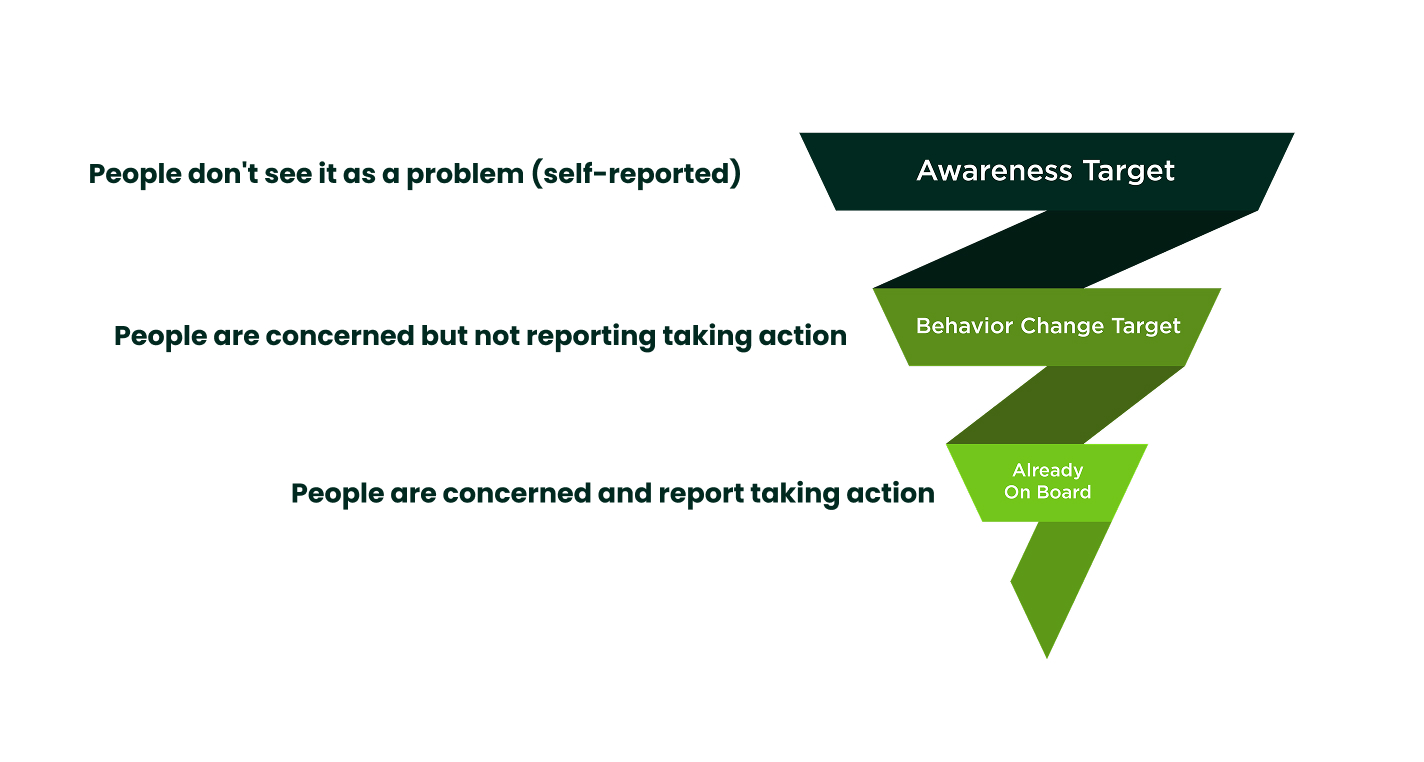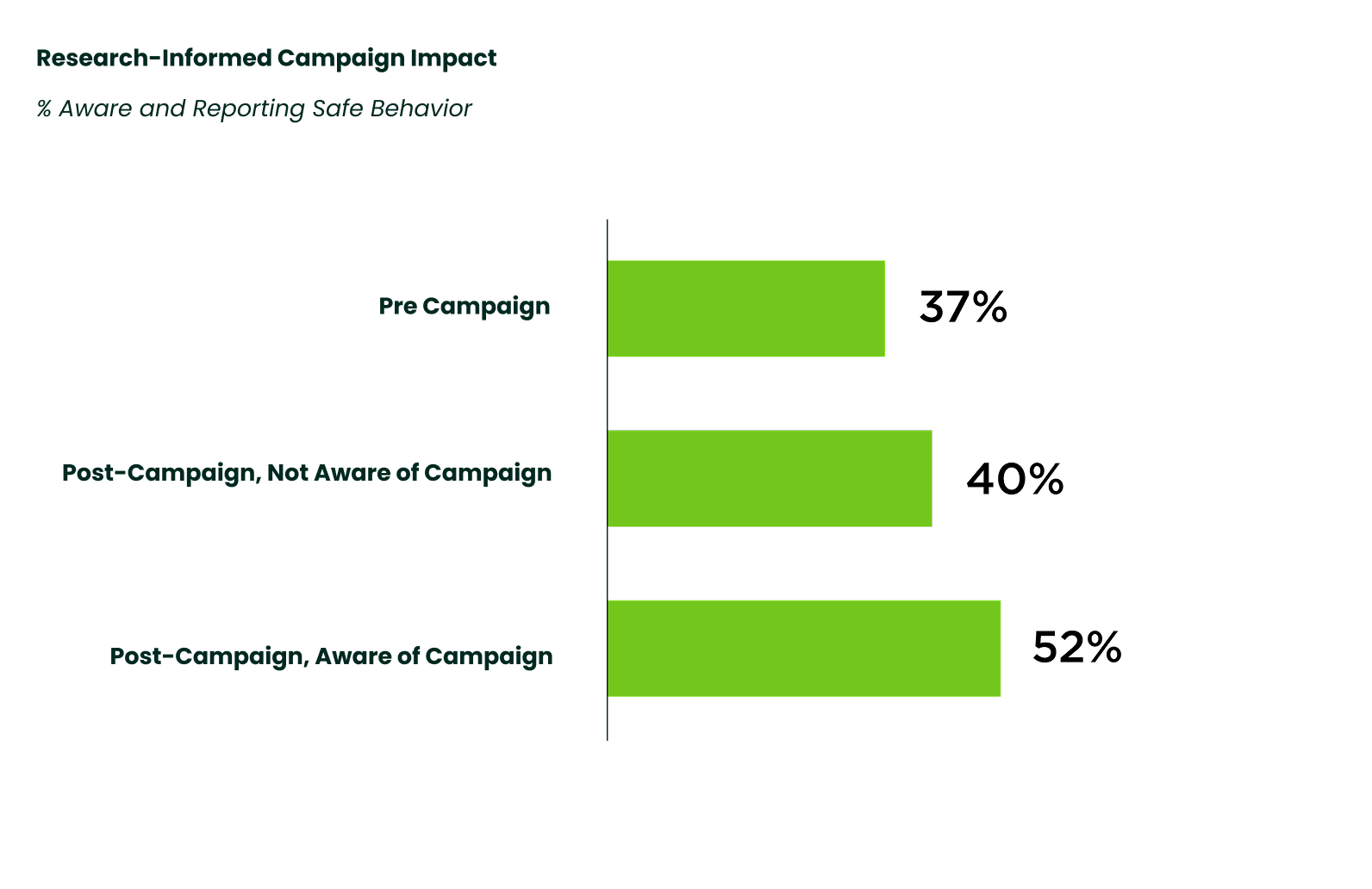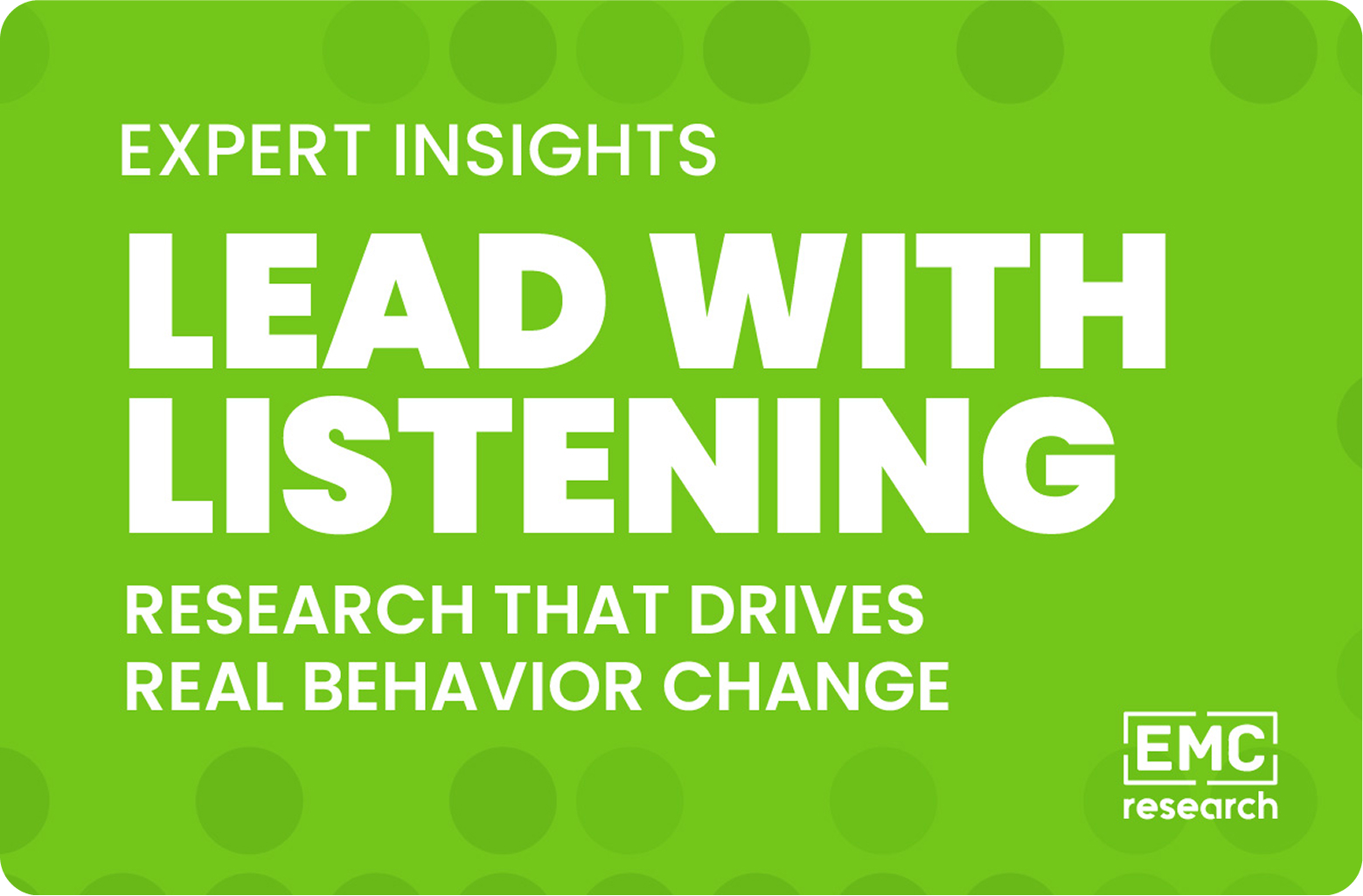A driver sits at an intersection, turn signal blinking, waiting to make an unprotected left turn. They scan for a gap in oncoming traffic. Behind them, another car inches closer. The driver feels the pressure, the need to move, to not hold anyone up, so when they see their opening, they accelerate through the turn.
Pedestrians or cyclists in the crosswalk weren’t the top priority; they were somewhere further down the mental checklist.
That single insight — captured through point-of-view opinion research — changed how San Francisco communicated about intersection safety, and it demonstrates why asking the right questions matters just as much as collecting the data. Our research for San Francisco’s Vision Zero program, in partnership with the planning and communication experts at MIG, helped create an effective public outreach campaign that changed behavior by listening first.
The Municipal Challenge: When Data Tells You What, Not Why
Cities have plenty of traffic data. They know which intersections are dangerous, where speeding occurs and when fatalities spike. What they don’t know is what drivers are actually thinking in those high-risk moments.
Without that understanding, safety campaigns miss the mark. Generic messaging like “slow down” or “watch for pedestrians” assumes people are already aware there’s a problem and ready to change. Research consistently shows that’s not where most people are.
The Behavior Change Funnel
Research typically reveals three distinct audiences in any community: people already concerned and acting, people concerned but not changing their behavior, and people who don’t see the issue at all.
To move each group toward behavior change requires understanding the progression of behavior change:

Often, we see safety campaigns start in the middle, assuming people are ready to change, but opinion research reveals where people actually are in the funnel, and more importantly, why they’re there.
Understanding the “why” allows cities to craft targeted communication for each stage: messaging that raises awareness of the problem, content that resonates to build genuine concern and calls to action that drive meaningful behavior change. Opinion research doesn’t just identify the gap; it provides the insights to create effective communication in crowded, competitive media markets where generic messages get lost.

What the Research Revealed
The Awareness Gap
City data showed unprotected left turns led to frequent pedestrian and cyclist injuries, but knowing where crashes happened didn’t explain why. When we researched what drivers were actually thinking in these moments, we found they genuinely believed they were being safe. But when asked what they were paying attention to, pedestrians and cyclists weren’t at the top of the list. Their cognitive priority was oncoming vehicles and not holding up traffic, concerns that felt more immediate than crosswalk safety.
When it came to speeding, a similar pattern emerged. Drivers believed matching the flow of traffic was safer than following posted limits. Going five miles per hour over didn’t register as speeding if they felt in control. The awareness simply wasn’t there that small speed increases dramatically raise injury risk for pedestrians and cyclists.
These aren’t reckless drivers. They are people who don’t yet see the problem.
Moving From Awareness to Concern
Once we understood what drivers were thinking, communications could address those specific beliefs. Instead of technical jargon from transportation engineers, campaigns used language that reflected how people actually talk about driving.
Visuals shifted from statistics to emotional connection — point-of-view shots looking through the windshield, reminding drivers they’re part of a shared community. When you’re behind the wheel, the people outside your car matter because you’re also a pedestrian, a parent, someone’s neighbor.

Why Sustained Investment Matters
Our data proved that this approach worked — tracking surveys showed measurable shifts in attitudes and self-reported safety behaviors after outreach campaigns designed to address the awareness and beliefs driving behavior. The segment of the population aware of the issue and reporting safe behavior increased from 37% to 52% among residents who recalled campaign communications.
But it also revealed something cities need to understand: behavior change isn’t permanent without consistent communication.
This finding makes the case for sustained funding. Opinion research serves dual purposes: shaping effective public information efforts, and supporting internal buy-in by showing decision-makers what can happen without continued investment.
The Strategic Case for Opinion Research
The most dangerous assumption municipal leaders make is thinking they already know what their community believes. Rather than produce generic awareness campaigns, through opinion research, cities can build messaging that connects with actual beliefs, identify where people are in the behavior change funnel, and create communication that moves people from awareness to action.
This approach extends beyond traffic safety. Public health initiatives, infrastructure projects, community programs — any effort requiring community behavior change benefits from understanding what people actually believe and why they act the way they do to build lasting changes that positively impact communities.
For cities ready to move beyond assumptions, opinion research provides the foundation for campaigns that create lasting behavior change.
Sara LaBatt
Sara LaBatt is Senior Principal at EMC Research, where she has spent over 20 years designing and conducting qualitative and quantitative opinion research for public agencies. She specializes in research that informs public policy, supports meaningful communications, and helps clients turn constituent insights into better decision-making.

